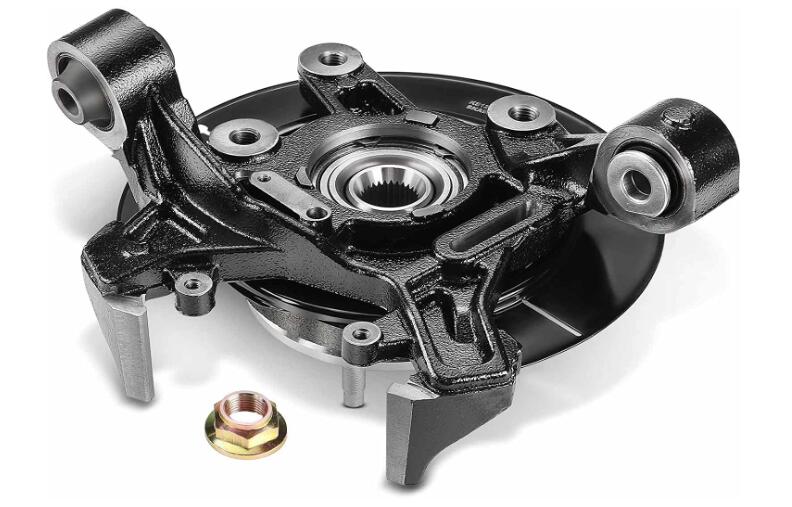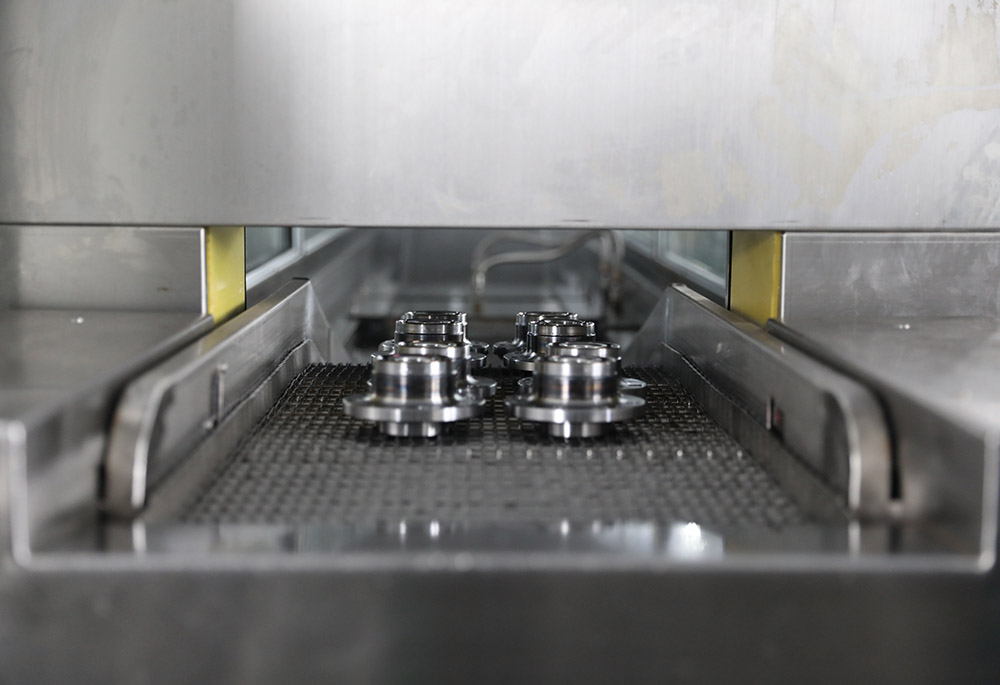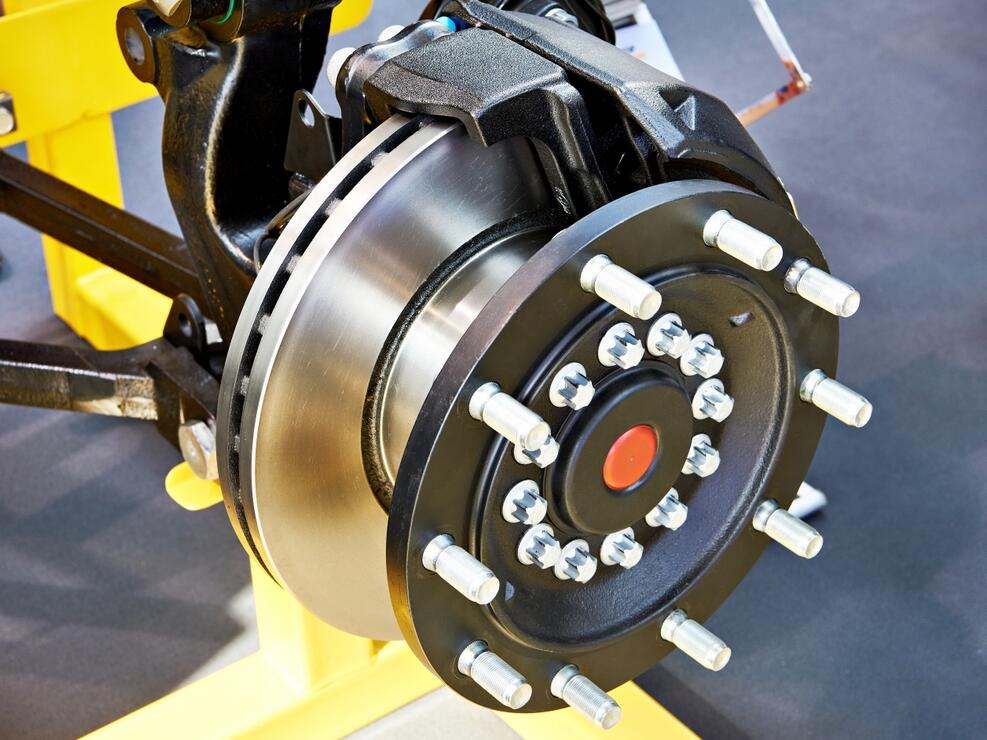Introduction
The wheel hub assembly is a crucial component of an automobile, contributing directly to the vehicle’s performance, safety, and efficiency.
With the vital role they play, manufacturers are obligated to adhere to stringent testing standards to guarantee the reliability of these assemblies.
This article will explore the importance of these rigorous testing standards; the tests typically performed, the role of international and domestic standards, and how continuous improvements in testing methods contribute to better wheel hub assemblies.
Part 1: The Importance of Rigorous Testing
The wheel hub assembly comprises wheel studs, bearings, and usually the ABS sensor.
The assembly is responsible for the smooth rotation of the wheels and contributes to the vehicle’s overall performance.
Faulty wheel hub assemblies can result in noisy driving, reduced control over the vehicle, and, in the worst-case scenario, wheel detachment.
Given these potential dangers, rigorous testing is vital to ensure that the wheel hub assemblies produced are reliable and safe.
Testing standards are a guideline that manufacturers should adhere to in evaluating their products.
Through comprehensive tests, manufacturers can determine their products’ durability, performance, and safety under various conditions.
Durability tests, for instance, subject the wheel hub assemblies to prolonged periods of stress to assess their lifespan.
On the other hand, performance tests evaluate the assembly’s smooth operation, speed capacity, and overall efficiency.
Finally, safety tests ensure that the product does not pose any risk when installed in a vehicle.
Part 2: Common Tests for Wheel Hub Assemblies
Manufacturers employ various tests to ascertain the quality and reliability of wheel hub assemblies.
One standard test is the Durability Test, designed to replicate the conditions the assembly might encounter throughout its lifespan.
The test typically involves spinning the wheel hub assembly at different speeds and loads for a specified period.
This helps to identify any premature failures and measure the assembly’s lifespan.
The ABS Sensor Test is another essential test, especially for assemblies with ABS sensors.
This test ensures the correct functioning of the ABS sensor, which is crucial for maintaining vehicle stability and preventing wheel lock during braking.
Thrust and Radial Load Tests assess the wheel hub assembly’s ability to withstand axial and radial loads.
These tests are crucial in evaluating the assembly’s performance under different driving conditions and loads.
Lastly, manufacturers conduct a Seal Test to ascertain the wheel hub assembly’s effectiveness.
Effective seals prevent contamination, which can significantly reduce the lifespan and performance of the assembly.
Part 3: The Role of International and Domestic Standards
In addition to internal quality control measures, manufacturers must adhere to international and domestic standards set by regulatory bodies.
These standards ensure that products meet a minimum set of requirements, irrespective of where they are manufactured.
Standards such as the International Organization for Standardization (ISO) guide wheel hub assemblies’ dimensions, tolerances, and performance characteristics.
Adherence to these standards allows manufacturers to produce high-quality, reliable products that can be sold in various markets worldwide.
Domestic standards vary by country and can be more stringent than international standards.
The American Bearing Manufacturers Association (ABMA) sets the standards for bearing and wheel hub assembly manufacturers in the United States.
Manufacturers must stay abreast of these standards and ensure their products comply to avoid recalls and maintain market standing.
Part 4: Continuous Improvement in Testing Methods
With technological advancements, testing methods for wheel hub assemblies are continually evolving.
From manual testing procedures, manufacturers have moved towards automated testing equipment, improving the accuracy and repeatability of tests.
Furthermore, integrating data analytics and machine learning algorithms into testing procedures allows manufacturers to gain deeper insights from their testing data.
These insights can lead to product improvements, as manufacturers can identify weak points in their designs and make necessary adjustments.
Simulated environment testing is another area seeing significant advancements.
With sophisticated equipment, manufacturers can replicate various driving conditions, such as different road surfaces and climates, and test the performance of their wheel hub assemblies under these conditions.
This provides a more comprehensive understanding of how the assembly will perform in real-world situations.
Part 5: The Impact of Quality Assurance
Testing doesn’t end after assessing a wheel hub assembly’s structural or functional properties.
The broader scope of quality assurance (QA) comes into play, encapsulating rigorous testing procedures and manufacturing processes.
A well-rounded QA process contributes significantly to the final product’s reliability and performance.
In-wheel hub assemblies, QA involves regular checks throughout the production line, ensuring the product is built to the design specifications.
This can include checking the precision of machining operations, monitoring the heat treatment process for bearing components and ensuring the correct assembly of the hub unit.
Each stage plays a role in the final product’s reliability, and a deviation in any step can significantly affect the wheel hub assembly’s performance.
One significant aspect of the QA process is batch testing.
Here, samples from different production batches are tested to ensure consistent quality.
This is crucial in detecting any variations in the manufacturing process that could lead to a drop in the quality of the assemblies.
Post-production testing is another crucial QA stage.
It serves as the final check before the product reaches the market. It involves comprehensive testing of the finished wheel hub assembly, including full function tests and further durability and performance tests.
This final step is the manufacturer’s last opportunity to catch any potential issues before the product hits the market.
Part 6: Emphasizing Transparency
With stringent testing standards and comprehensive QA procedures, manufacturers ensure reliable wheel hub assemblies are produced.
However, understanding these testing processes and their significance can be challenging for consumers and industry stakeholders.
As such, transparency in testing and certification becomes crucial.
Transparency builds trust with consumers and stakeholders.
By openly sharing their testing processes, manufacturers can assure customers that their wheel hub assemblies are highly quality, reliable, and meet or exceed industry standards.
This can be done through detailed product documentation, openly accessible test results, and clear labeling of certifications and standards the product meets.
Furthermore, manufacturers can receive valuable feedback from their customers and other stakeholders by fostering an open dialogue about their testing processes.
This can further improve testing methods and standards, enhancing the wheel hub assemblies’ quality.
Part 7: Training and Professional Development in Testing Practices
In addition to the direct testing methods, there is a significant human element to ensure the reliability of wheel hub assemblies.
Proper training and professional development of staff in testing practices are key elements that drive the efficiency and effectiveness of the testing process.
Operators, technicians, and engineers must be adequately trained in the specific methodologies employed in the wheel hub assembly testing process.
This includes understanding the principles of the tests, knowledge of the equipment used, ability to identify faults or anomalies, and ability to interpret the data collected.
Continuous professional development (CPD) is also essential.
As technology advances, so too should the knowledge and skills of the workforce.
Training programs should be updated regularly to reflect new industry standards, technological advancements in testing equipment, and changes in production processes.
By investing in their workforce in this way, manufacturers can ensure that their products meet the highest standards of quality and reliability.
Part 8: The Evolution of Testing Standards
Testing standards are not static; they evolve with technological advancements, materials, and production processes.
As the automotive industry progresses, so must the standards that guide the production and testing of components like wheel hub assemblies.
Future trends in the industry, such as the shift towards electric vehicles (EVs), will undoubtedly impact testing standards.
For example, EVs have different performance characteristics and demands than traditional internal combustion engine vehicles.
These differences may require new or updated testing procedures to ensure the wheel hub assemblies used in these vehicles are reliable and effective.
Another aspect driving the evolution of testing standards is the push toward more sustainable production methods.
New materials or production processes to reduce the environmental impact of manufacturing wheel hub assemblies may bring new challenges requiring innovative testing solutions.
Conclusion
Adherence to rigorous testing standards is fundamental to producing reliable wheel hub assemblies.
It is an intricate process involving precise equipment, advanced technology, industry expertise, and an evolving set of standards.
Ensuring these factors harmoniously is key to producing high-quality wheel hub assemblies.
Moreover, as the automotive industry continues to evolve and innovate, so must the testing procedures and standards that help guarantee reliability.
By staying at the forefront of these developments, manufacturers can ensure that their wheel hub assemblies meet the highest performance and reliability standards, contributing to safer, more efficient, and increasingly sustainable vehicles.




